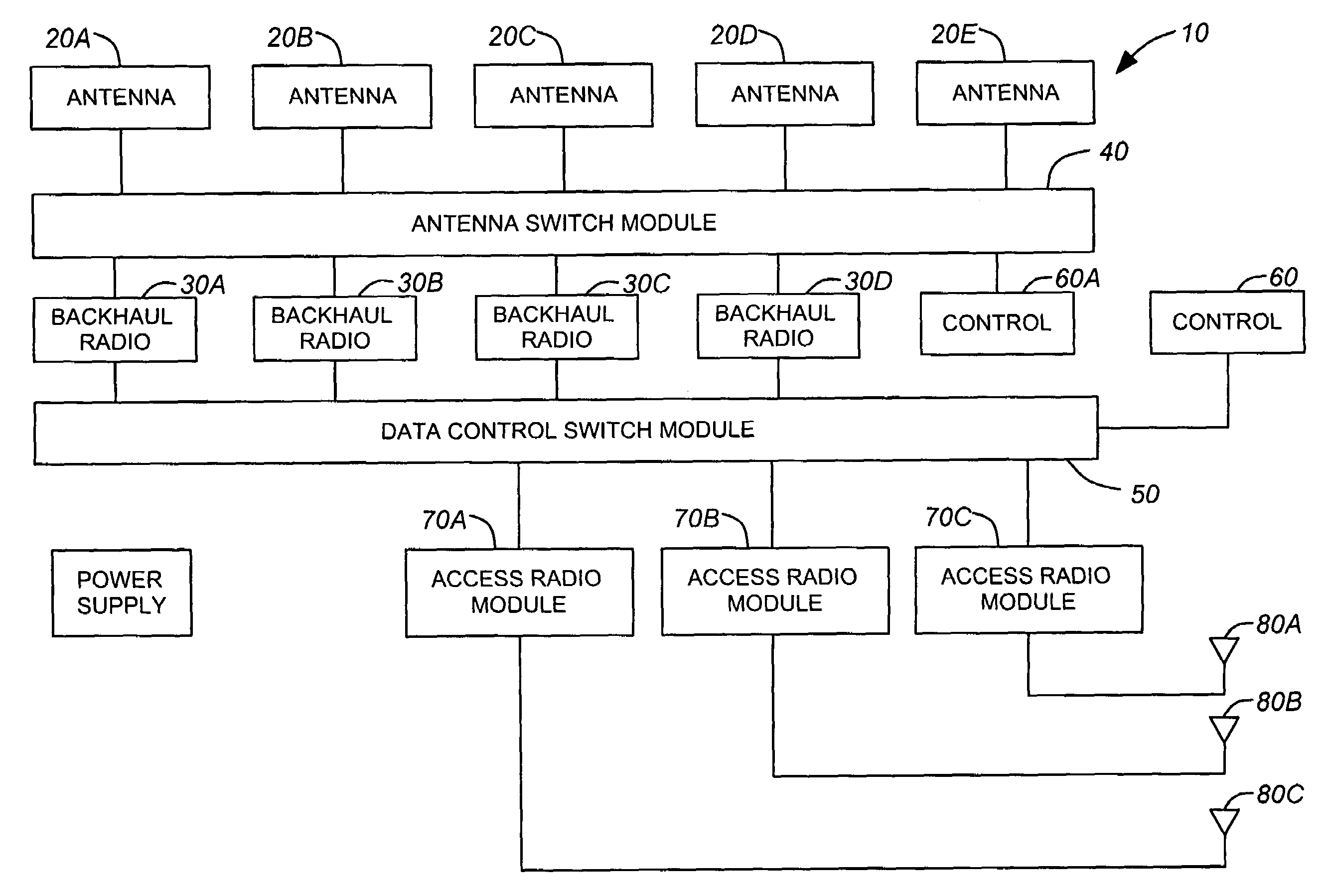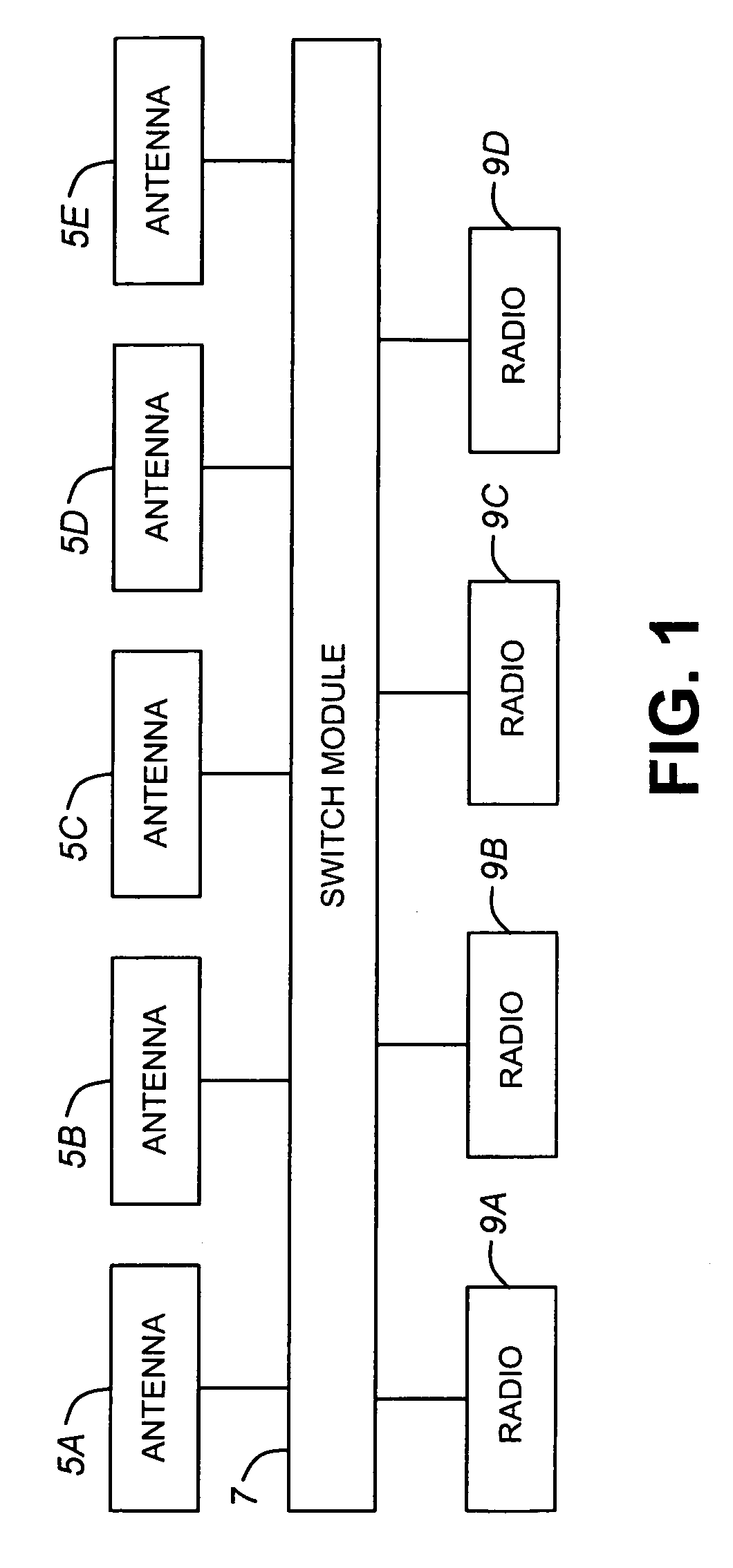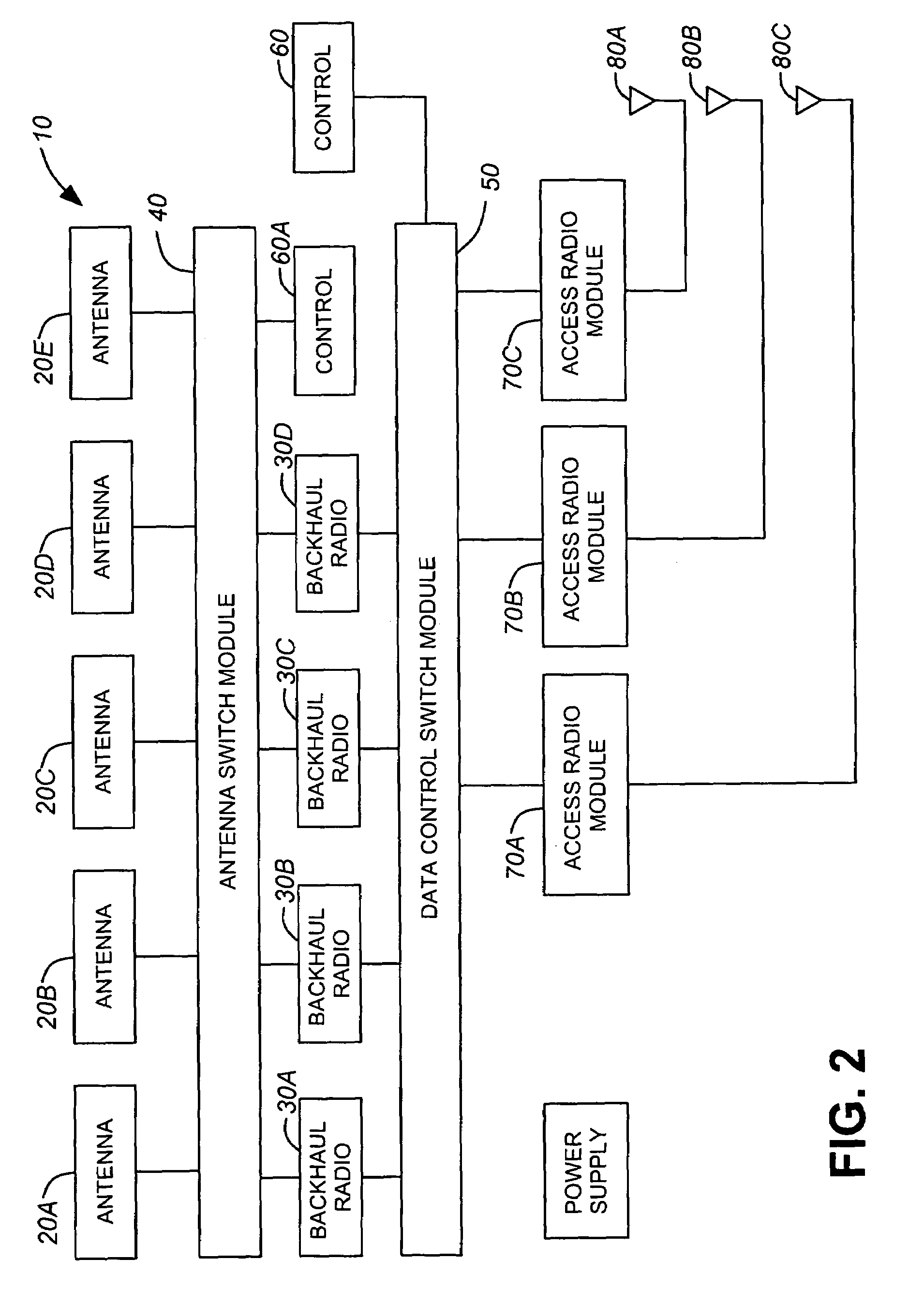Automatic antenna selection for mesh backhaul network nodes
a backhaul network and automatic antenna selection technology, applied in the field of wireless backhaul networks, can solve the problems of large burden on the backhaul network feeding the area serviced by the localized wireless nodes, and the network is backhaul data transmission
- Summary
- Abstract
- Description
- Claims
- Application Information
AI Technical Summary
Benefits of technology
Problems solved by technology
Method used
Image
Examples
Embodiment Construction
[0051]Referring to FIG. 1, a subsystem which may be used for a wireless communications device is illustrated. The subsystem consists of multiple antennas 5A–5E coupled to a switch module 7 which is, in turn, coupled to multiple radios 9A–9D. The switch module 7 allows any of the radios 9A–9D to use any of the antennas 5A–5E for transmitting signals, receiving signals, or both. The switch module may be a crossbar switch or any suitable switching system that allows radios to be coupled to antennas and vice versa. This subsystem allows the radios 9A–9D to select an antenna from the available antennas which is most suited for a particular task.
[0052]It should be noted that the antennas 5A–5E need not be of the same type or have the same function. These antennas may be polarization diversity antennas, spatial diversity antennas, directional antennas or any other type of antenna. Similarly, the radios 9A–9D need not be of the same type or function. For systems with different types of ante...
PUM
 Login to View More
Login to View More Abstract
Description
Claims
Application Information
 Login to View More
Login to View More - R&D
- Intellectual Property
- Life Sciences
- Materials
- Tech Scout
- Unparalleled Data Quality
- Higher Quality Content
- 60% Fewer Hallucinations
Browse by: Latest US Patents, China's latest patents, Technical Efficacy Thesaurus, Application Domain, Technology Topic, Popular Technical Reports.
© 2025 PatSnap. All rights reserved.Legal|Privacy policy|Modern Slavery Act Transparency Statement|Sitemap|About US| Contact US: help@patsnap.com



